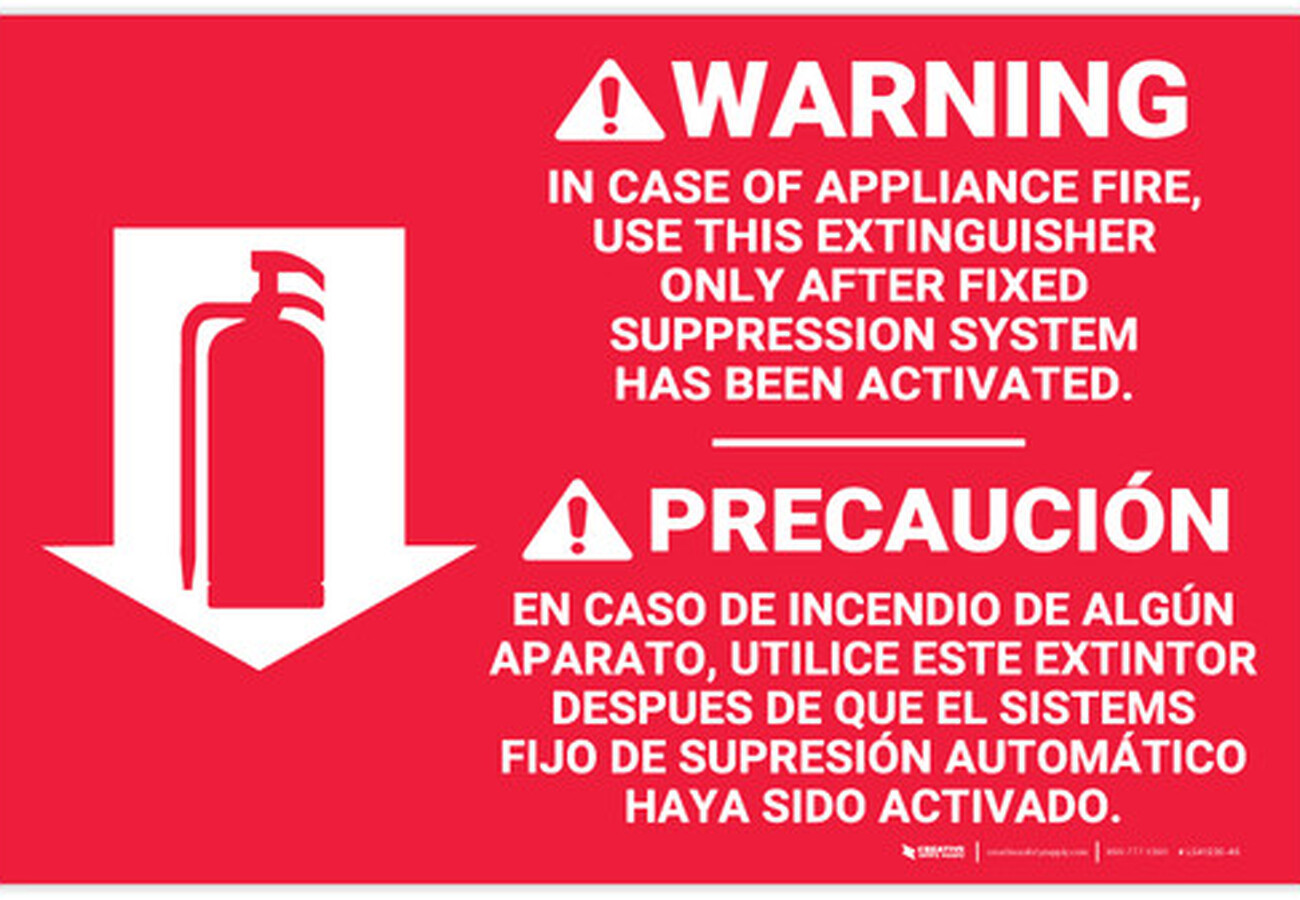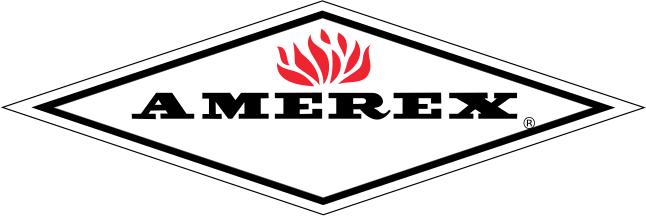What is a Class K fire? As a fire extinguisher technician walking through commercial buildings, how often do you encounter a hazard where a fire is part of the normal day to day operation with enough fuel to sustain that fire indefinitely? I will bet your answer is “Not very often, if at all.” That is exactly the situation you will encounter when you enter a commercial cooking operation with a class K fire hazard.
The fire classification of K for fires in “cooking appliances that involve combustible cooking media,” which was introduced in the early 1990s is our newest class of fire (Previously a 40BC regular dry chemical fire extinguisher was usually paired with a dry chemical fire suppression system to protect commercial cooking operations). The 1980s presented a swell of fire losses in commercial cooking establishments that were a result of several factors. First, the energy crisis of the 1970s significantly increased the cost of cooking food, which resulted in more energy efficient cooking appliances that hold heat for a very long time. Second, consumers became more health conscious, which resulted in most cooking operations switching from animal fat-based oils to vegetable-based oils. Vegetable oil has a significantly higher auto ignition temperature (685 vs 650) which makes fires harder to extinguish and secure. Third, the number of restaurants in the US increased rapidly and has not slowed down, even today.
Class K fires are extinguished using two different methods: Saponification, and cooling. When the chemical (previously dry and now wet) is discharged onto organic oils and greases, it produces a chemical reaction called saponification which is simply the process of making soap or bubbles. This blanket of foam forms a barrier on the surface that deprives the fire of oxygen. Wet chemical makes a much stronger and thicker foam blanket than dry chemical and it provides cooling capabilities where dry chemical does not.
This increase in fire losses drove Underwriters laboratories (UL) to reimagine and reinvent their Subject UL300 that was being used as the standard for testing restaurant fire systems. The result was the launch of a new UL300 “Standard for Fire Testing of fire extinguishing systems for Commercial cooking operations” in November 1994. This new, modern standard uses a commercially available deep fat fryer instead of a steel box with lard in it, it increased the one minute pre-burn time to a two-minute pre-burn before extinguishment could be tested, it ensured that the discharge spray of the fire system would not splash hot oil onto any employees or patrons, and it required the fire be secured without reflash for 20 minutes.
The new UL300 Standard was a worthy challenge for the fire equipment manufacturers. None of the existing dry chemical systems could pass the new fire test standard and the wet chemical systems that passed had to use up to five times as much wet chemical to extinguish and secure the fire. In short, the UL300 Standard changed the entire industry.
The lessons learned from the UL300 standard development were added to the UL711- “Rating and Fire Testing of Fire Extinguishers” standard which started requiring that the same commercially available deep fat fryer be used with aone-minute preburn, a splash test, and to secure the fire for 20 minutes. None of the 40BC fire extinguishers being used at the time could pass that entire test which drove the creation of the K class fire rating and the development of the wet chemical fire extinguisher.
In today’s commercial kitchens, class K fire extinguishers are a normal part of doing business and the IFC and NFPA codes guide us in deciding how many are needed, where and how they should be installed and when they should be activated. Below is a summary of fire code passages based on the most current versions of the International Fire Code and National Fire Protection Association standards. You should always check with your local jurisdiction to see what IFC and NFPA revisions they are currently enforcing.
How many K class fire extinguishers should you have and where should they be located?
IFC 906.4.2 Requires 1 K rated 6 Liter fire extinguisher for every 4 deep fat fryers and for fryers exceeding 6sf in surface area.
NFPA 10 - 6.6.1 - Class K fire extinguishers shall be provided for hazards where there is a potential for fires involving combustible cooking media (vegetable or animal oils and fats).
NFPA 96 - 10.9.2 - Class K fire extinguishers shall be provided for cooking appliance hazards that involve combustible cooking media (vegetable oils and animal oils and fats).
NFPA 10 - 6.6.2 - Maximum travel distance shall not exceed 30 ft (9.1 m) from the hazard to the extinguishers.
NFPA 96 - 10.2.1 Fire-extinguishing equipment shall include both automatic fire-extinguishing systems as primary protection and portable fire extinguishers as secondary backup.
NFPA 10 - 5.5.4.5.3 - Where a hazard is protected by an automatic fire protection system, a placard shall be placed near the extinguisher that states that the fire protection system shall be actuated prior to using the fire extinguisher.
NFPA 96 - 12.1.4 - Instructions shall be provided to new employees on hiring and to all employees annually on the use of portable fire extinguishers and the manual actuation of the fire-extinguishing system.

NFPA 10 - 6.7 Solid-Fuel Cooking Appliances - All solid-fuel cooking appliances (whether or not under a hood) with fire boxes of 5 ft3 (0.14 m3) volume or less shall have at least a listed 2-A-rated water-type fire extinguisher or a 1.6 gal (6 L) wet-chemical fire extinguisher that is listed for Class K fires.
NFPA 96 - 15.9.2.8.3 - In lieu of the sprinkler system outlined in 15.9.2.8, a listed 2-A rated water spray fire extinguisher or a 1.6 gal (6 L) wet chemical fire extinguisher listed for Class K fires with a maximum travel distance of 20 ft (6 m) to the solid fuel piles shall be permitted to be used for a solid fuel pile, provided that the fuel pile does not exceed 5 ft3 (0.14 m3) volume.
Refuse and storage areas in the back of the commercial cooking operation often have large amounts of cardboard, waste oil and new fryer oil. Amerex offers an array of acceptable Fire Extinguisher choices for this deep-seated type of occupancy hazard. The A240 Water Fire extinguisher with a Loaded Stream Charge is best suited if no oil or grease is present and the B260 or B262 Class K fire extinguishers with a 2A K UL rating are best suited if waste oil or new fryer oil is being stored.
Key Resources:
Watch here to learn how to use a Class K Fire Extinguisher
Watch here to learn more about the Amerex Commercial Kitchen Fire Suppression Systems
Download the Amerex Commercial Kitchen Fire Protection Brochure


